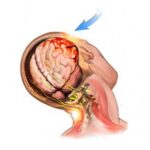Every year at Horn Law, we see a spike in teen driver accidents between Memorial Day and Labor Day. These approximate 100 days account for most of the summer, which is when teenagers have the ability to spend more time on the road. However, COVID-19 has created a unique set of circumstances, where summer came early for these young, inexperienced drivers, and now, they have even more time out on the road.
Why Do We See a Spike in Teen Driver Accidents in the Summer?
The reason more accidents involving teen drivers happen over the sum is that students are out of school. This means that more teens are driving around to see friends around town. Spending time with friends is a healthy activity for teens, but as your teenager drives with more people in the car, they are at a higher risk of getting distracted while behind the wheel.
Distractions like passengers and cell phones are all too common, especially in younger drivers. With friends in the car, teens might be more concerned with conversations, music, temperature controls, and a variety of other distractions that could lead to a serious automobile accident.
Additionally, these same students are no longer spending their evenings studying. Instead, they are out at night being social with other teenagers. Driving at night can create further issues for teen drivers. The first issue is that the darkness just makes it harder to see obstacles on the road. Another main concern for teen parents is drinking and driving, which is incredibly dangerous.
What Changes with COVID-19?
The coronavirus is bound to create a bit of an issue with teenagers on the roads this summer. Unlike other summers, many teenagers may forego a part-time job at a grocery store or restaurant where they might risk exposure to the virus. This means that teens will have a lot of free time to cruise around to visit friends or go to retail stores, summertime recreation, or any other activities that they normally wouldn’t be able to enjoy due to school.
Extra free time is bound to lead to more joyriding, especially when regular hangouts are closed for business due to the coronavirus shutdown. If you live in an area that doesn’t have a lot of open businesses, your teen might pass the time by cruising the streets.
Why Is This a Problem in Missouri?
Missouri parents are likely concerned about their teenagers behind the wheel during the summer months. Parents are rightfully worried about their children. In Missouri, there is no requirement for drivers’ education, which means that some teenagers are underequipped to be out on the roads without adult supervision.
Additionally, lax seat belt laws, including the lack of a primary seat belt law, in Missouri mean that some teenagers don’t feel obligated to wear a seat belt, which could be the difference between life and death in an accident.
Finally, not all police districts or individual officers enforce the teen driver texting ban, because there is no universal distracted driving ban in the state.
How Can You Protect Your Teenager?
Fortunately, parents in Missouri can do a few different things to help protect their teenage drivers. First, we recommend that parents always set the example while they are behind the wheel. Horn Law’s Drive by Example initiative asks parents to model the way that they want their children to drive. Ideally, parents do this from a young age, so their children can see what appropriate behavior while driving looks like. As a parent, you should show your children how to stay alert and calm, while also modeling how to prevent distractions and buckle up every time you get in a vehicle. We also recommend always placing your cell phone in the glove compartment so that it is inaccessible while you are behind the wheel. You should ask your teenagers to do the same.
Next, we recommend teaching your teenagers our ABCDs of driving:
A-Alert: While on the road, stay alert and focused on the area in front of you. An alert driver scans the road for potential hazards. Teach your teen to ignore distractions from inside the vehicle and concentrate on the road and other drivers.
B-Buckled: Seat belt usage for adult front-seat vehicle occupants is now mandatory in all states and the District of Columbia, with the exception of only New Hampshire. Thirty-four states and D.C. have primary enforcement laws, meaning that police officers can stop and ticket motorists solely for failing to use a seat belt. The remaining states have secondary enforcement laws, which allow police offers to ticket motorists only if they were stopped for another offense first. As for children, laws tend to be much stricter on proper seat belt usage for minors, including teenagers.
The reason that seat belts are so vital is that they protect people from potentially serious injuries and even death. Unrestrained motorists and passengers may receive serious head, chest, and abdominal injuries. Without a seat belt, the risk of being ejected from the vehicle is much higher.
Teach your teenager always to wear a seat belt and start by being a good example. Inform your teenager that they should never allow someone in their vehicle to be unbuckled when the vehicle is in motion. This means that you pull over as soon and safely as possible should someone remove their seat belt while the vehicle is in motion, and you never put a vehicle in motion if anyone in the car isn’t properly buckled.
C-Cautious: A cautious driver is one who focuses first on safety. Teach your teenager to carefully merge into traffic, change lanes, exit highways, and make turns. By taking extra precautions behind the wheel, your teen could avoid a potentially deadly accident.
D-Defensive: Being on the defensive is a critical skill that all drivers need to possess. Roadways are more dangerous than ever with more people on the roads, higher incidents of distracted driving, higher rates of speed, and more aggression behind the wheel. Start teaching your teenagers to be defensive drivers to set them up for safe driving for life. Defensive drivers are always on the watch for other drivers who may be more careless on the road. As a defensive driver, you are ready to avoid a collision.
In addition to these tips, we recommend that parents frequently talk to their teenagers about driving safety. This is the perfect opportunity to reinforce everything you have modeled for them as well as our ABCD tips. Parents should also know where their teen is going when they leave the house in a car.






